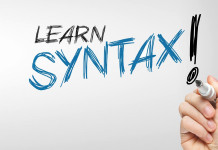Methods in English Language Teaching (ELT) are systematic procedures or plans for presenting material for instruction. A method is a way of teaching with prescribed objectives and guidelines, and the teacher has little or no leeway regarding implementation. An approach is a way of teaching whose principles can be applied in many different ways.
Grammar Translation
Grammar Translation is a traditional teaching style that originated in the late 19th century. Students analyse the grammatical rules of English and then practice translating discourse from their mother tongue into English and vice versa. The method emphasises accuracy over fluency. Learners develop reading and writing skills but have little opportunity to practice listening and speaking. This means students learning English through the Grammar Translation method often have trouble communicating in the real world.
Advantages
- Helps learners understand complex grammatical structures and syntax.
- Develops learners’ ability to translate accurately between languages, which can be helpful in literary and academic contexts.
- Enhances reading comprehension and analytical skills.
Disadvantages
- Little to no emphasis on speaking and listening skills, leading to poor oral communication abilities.
- The method does not reflect the natural way languages are acquired and used in real-life situations.
- Focusing on rote memorisation and translation can be tedious and disengaging for learners.
- Does not provide learners with opportunities to use the language in meaningful contexts.
Direct Method
The direct method, also known as the oral or natural method, was based on the assumption that learners of foreign and second languages should directly think in English. This method is against the translation of written and oral text and focuses on telling the meanings of the words through action, demonstration or real objects. This method focuses on directly thinking, discussing and conversing in a second language. The direct method is an attempt and effort to form a link between thought and expression and between experience and language.
Advantages
- Promotes fluency and oral communication skills, making learners more confident in language use.
- Early focus on speaking helps learners develop accurate pronunciation and intonation.
- Interactive and dynamic teaching methods keep learners engaged and motivated.
- Vocabulary and grammar are learned in context, enhancing retention and understanding.
Disadvantages
- May not provide sufficient focus on reading and writing skills.
- Requires teachers to be highly proficient in the target language and skilled in using the direct method effectively.
- Teaching abstract vocabulary and complex grammar can be challenging without using the native language.
Audiolingual Method
This way of teaching was initially called the Army Method because, in World War II, it was used to teach soldiers to be orally proficient in the enemy’s languages. This method was a reaction to what was seen as the failures of the grammar-translation method, with the significant differences being the prioritising of speaking and listening over reading and writing and the banning of the mother tongue in the classroom. Audiolingual method drew on Skinner’s Behaviourism theory, very much in vogue at the time, that asserts that anything can be learned through conditioning.
Advantages
- Strong focus on developing speaking and listening skills.
- Effective for mastering grammatical structures and sentence patterns.
- Emphasises correct pronunciation and intonation.
- Provides learners with immediate correction, helping them form accurate language habits.
Disadvantages
- Repetitive drills can become monotonous and disengaging for learners.
- Lack of emphasis on free expression and creative language use.
- Focuses on form and structure without sufficient context, potentially leading to a lack of communicative competence.
- Minimal attention to developing reading and writing skills.
Communicative Language Teaching (CLT)
CLT is the most popular approach in English language teaching and is now the central paradigm. It emphasises learners’ engagement in classroom activities that replicate real-life situations so they can practice communicating in the real world outside the classroom. To improve communication skills for use in the outside world, the teacher engages learners in the pragmatic and functional use of language, focusing on meaning and fluency rather than form and accuracy – very much a practical rather than theoretical way of learning. The primary goal of CLT is for learners to develop communicative competence, which involves linguistic, sociolinguistic, discourse, and strategic competence. Features of CLT include communication through interaction (cooperative and collaborative learning), the use of authentic texts, and students’ contributions to personal experiences.
Advantages
- Prepares learners for real-life communication by emphasising practical language use.
- Engages learners through interactive and meaningful activities.
- Integrates all language skills, providing a well-rounded language learning experience.
- Encourages learner autonomy and active participation in the learning process.
Disadvantages
- Requires teachers to be proficient in the target language and skilled in managing communicative activities.
- Managing and organising communicative activities can be challenging, especially in large or diverse classrooms.
- Assessing communicative competence can be more complex than determining grammatical knowledge or written work.
Task-based Language Teaching (TBLT)
TBLT is an approach based on the assumption that tasks are the primary language learning unit. This approach is based on the problem-solving view that the learners should be given some tasks to solve. These tasks are related to the language structures that are required to be learnt. The learners interact and communicate with each other during solving these problems. In this way, they learn the language.
Advantages
- Engages learners by focusing on meaningful, real-world tasks.
- Promotes the practical use of language in context, preparing learners for real-life communication.
- Integrates various language skills, providing a holistic learning experience.
- Encourages learner autonomy and active participation.
Disadvantages
- Designing and managing tasks can be complex and time-consuming for teachers.
- Assessing language proficiency and progress through tasks can be challenging.
- Requires appropriate resources and materials to create authentic tasks.
Community Language Learning (CLL)
CLL is an approach to language teaching developed by Charles A Curran in the 1970s. Based on the principles of counselling and humanistic psychology, specifically Carl Rogers’ theories of learning, CLL emphasises a supportive, collaborative, and empathetic learning environment. The teacher acts as a facilitator or counsellor, helping learners to feel comfortable and confident as they work together to develop their language skills. It focuses on the learners’ needs, emotions, and experiences and encourages cooperation and mutual support among learners. The learners’ native language can be used initially to facilitate understanding and reduce anxiety.
Advantages
- Creates a safe and supportive environment that reduces anxiety and builds confidence.
- Tailors learning to the individual needs and experiences of learners.
- Promotes collaboration and mutual support, enhancing group cohesion.
- Can be adapted to different learning contexts and needs.
Disadvantages
- Can be more time-consuming than traditional methods, especially in larger classes.
- Requires teachers to be trained in counselling skills and humanistic approaches.
- Learners may initially depend heavily on their native language, which can slow progress in the target language.
Suggestopedia
Suggestopedia is a language teaching method that leverages the power of suggestion to enhance learning. This method is based on the premise that the human brain can more effectively process and retain information when in a relaxed and positive state. Suggestopedia aims to create an optimal learning environment by combining relaxation techniques, positive reinforcement, and a multisensory approach to instruction. The learning environment is designed to be relaxing and stress-free, often incorporating elements such as comfortable seating, music, and soothing décor. Lessons include visual, auditory, and kinaesthetic elements to engage multiple senses and enhance memory retention.
Advantages
- The relaxed atmosphere and positive reinforcement help reduce learner anxiety and create a positive learning experience.
- Multisensory learning and the use of music can enhance memory retention and recall.
- The use of varied activities and materials keeps learners engaged and motivated.
- Addresses both the cognitive and emotional aspects of learning.
Disadvantages
- Requires specific materials, comfortable classroom setups, and sometimes special teacher training.
- The method’s effectiveness can vary depending on cultural contexts and learner preferences.
- Relies heavily on the teacher’s ability to create and maintain a suggestive and authoritative presence.
Total Physical Response (TPR)
TPR is a method built around the coordination of speech and action where teachers give commands in the target language, and students respond with physical movement. Asher believed that students learn a second language in the same way that infants learn their native tongue. He claimed that much of the linguistic input young children hear is a command. They respond physically, which activates the right side of the brain, thus allowing them to be able to internalise language immediately.
Advantages
- The use of physical movement makes learning enjoyable and can keep students engaged.
- Physical actions help to reinforce memory and improve retention of vocabulary and structures.
- Focusing on comprehension before speaking reduces pressure on learners to produce language before they are ready.
- Suitable for young learners, beginners, and students of varying abilities, including those with special educational needs.
Disadvantages
- Primarily useful for teaching basic vocabulary and simple commands; less effective for advanced language structures and abstract concepts.
- Should be complemented with other methods to cover all aspects of language learning, including reading and writing.
- Requires teachers to be creative and energetic and to prepare a variety of commands and activities.
Silent Way
The silent way is characterised by its focus on learner autonomy, active problem-solving, and minimal teacher talk. It posits that learners retain information better when they discover and create knowledge themselves rather than receiving it passively. The teacher acts as a facilitator, providing tools and guidance while encouraging learners to take responsibility for their learning. The teacher speaks as little as possible, allowing learners to produce language and solve problems independently.
Advantages
- Encourages learners to take control of their learning process.
- Discovery and problem-solving lead to deeper understanding and retention of language.
- Learners are actively engaged in the learning process, which can increase motivation and interest.
- Emphasises precise pronunciation and grammatical accuracy.
Disadvantages
- Learners may initially find the method challenging due to the lack of explicit instruction.
- Requires teachers to be well-trained in using the method effectively.
- The process of discovery and problem-solving can be time-consuming.
- May not cover all aspects of language learning, such as extensive vocabulary development or cultural nuances.
Eclectic Methods
Eclectic methods refer to a teaching approach that draws on multiple methodologies and techniques from different language teaching methods. Teachers select the most effective elements from various approaches to suit their students’ needs and their classrooms’ specific context. Eclecticism promotes flexibility in teaching. Teachers are not bound to a single method but can choose from a wide range of techniques. It allows adaptation to different learning styles, objectives, and classroom dynamics. Eclectic methods often place the learner at the centre, adapting to their needs, interests, and proficiency levels. It combines elements that address all language skills: listening, speaking, reading, and writing, and integrates grammar, vocabulary, and cultural aspects into communicative practice.
Examples of Eclectic Techniques
- Communicative Language Teaching (CLT): Emphasis on communication and interaction.
- Task-Based Language Teaching (TBLT): Use of tasks as the central unit of planning and instruction.
- Grammar Translation Method: Focus on translating sentences and learning grammar rules.
- Audiolingual Method: Use of drills and repetition to develop language patterns.
- Direct Method: Teaching through the direct association of meaning with the target language without translation.
Advantages
- Allows for a tailored approach that meets the specific needs and preferences of individual learners.
- The variety of activities and techniques can increase learner engagement and motivation.
- Teachers can adjust their strategies based on what works best in different contexts, making them adaptable to various teaching situations.
- Enables using the most effective techniques from different methods, increasing the likelihood of successful learning outcomes.
Disadvantages
- Managing and integrating multiple methods can be complex and time-consuming.
- Without careful planning, the eclectic approach can lead to a lack of coherence and consistency in teaching.
- Requires a high level of teacher knowledge and skill to select and combine different methods effectively.
Post-method Pedagogy
Post-method pedagogy is a concept that emerged in response to the perceived limitations of traditional method-based teaching. It advocates for a move beyond rigid, prescriptive methods towards a more dynamic, flexible, and context-sensitive approach to language teaching. It empowers teachers to make informed decisions based on their professional judgment, experience, and understanding of their teaching contexts. Post-method pedagogy recognises the importance of the particular sociocultural, institutional, and individual contexts in which teaching and learning occur. Teachers use a set of guiding principles rather than following a fixed method.
Advantages
- Allows teachers to adapt their approaches to fit the specific needs of their students and teaching contexts.
- Empower teachers to use their professional judgment and creativity, fostering a sense of ownership and agency.
- Ensures that teaching is relevant to the learners’ real-world experiences and sociocultural backgrounds.
- Embraces diverse teaching practices and perspectives, accommodating different learning styles and preferences.
Disadvantages
- The lack of a fixed method can be challenging for teachers who prefer clear guidelines and structures.
- Requires teachers to be well-trained, reflective, and adaptable, which may necessitate ongoing professional development.
- Developing appropriate assessment strategies that align with post-method pedagogy’s flexible and context-specific nature can be complex.
Eclectic methods and post-method pedagogy represent a shift towards more flexible, adaptive, and context-sensitive approaches in language teaching. Combining the strengths of various methods and emphasising teacher autonomy and reflective practice, these approaches aim to create more effective and meaningful student learning experiences. As language teaching continues to evolve, these approaches offer valuable frameworks for addressing the diverse needs of learners in a rapidly changing world.
These ELT methods offer diverse language instruction approaches, each with strengths and weaknesses. Understanding these methods allows educators to choose the most appropriate techniques for their teaching context and learner needs, fostering more effective and engaging language learning experiences.



























